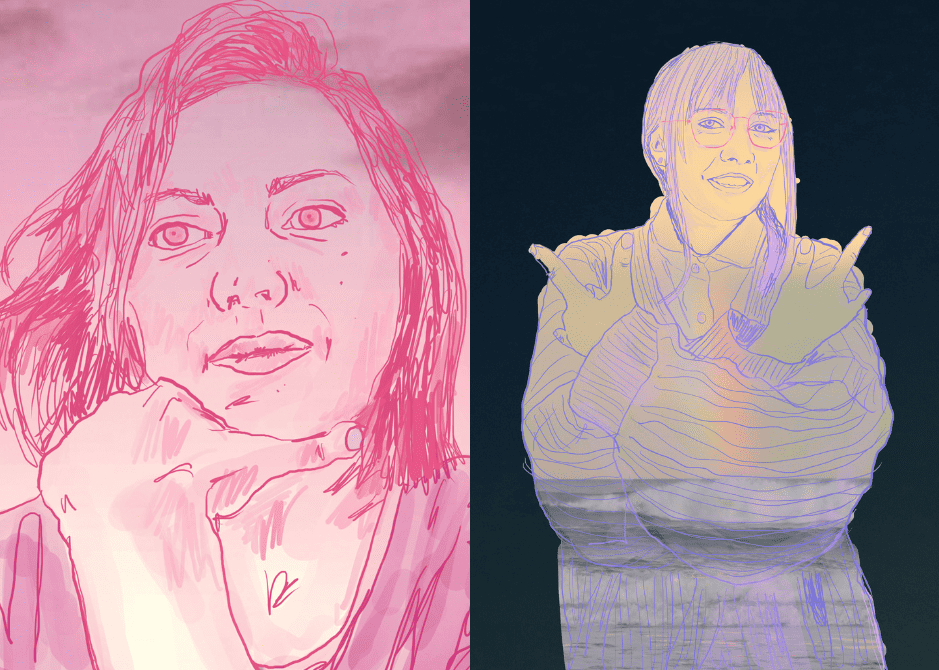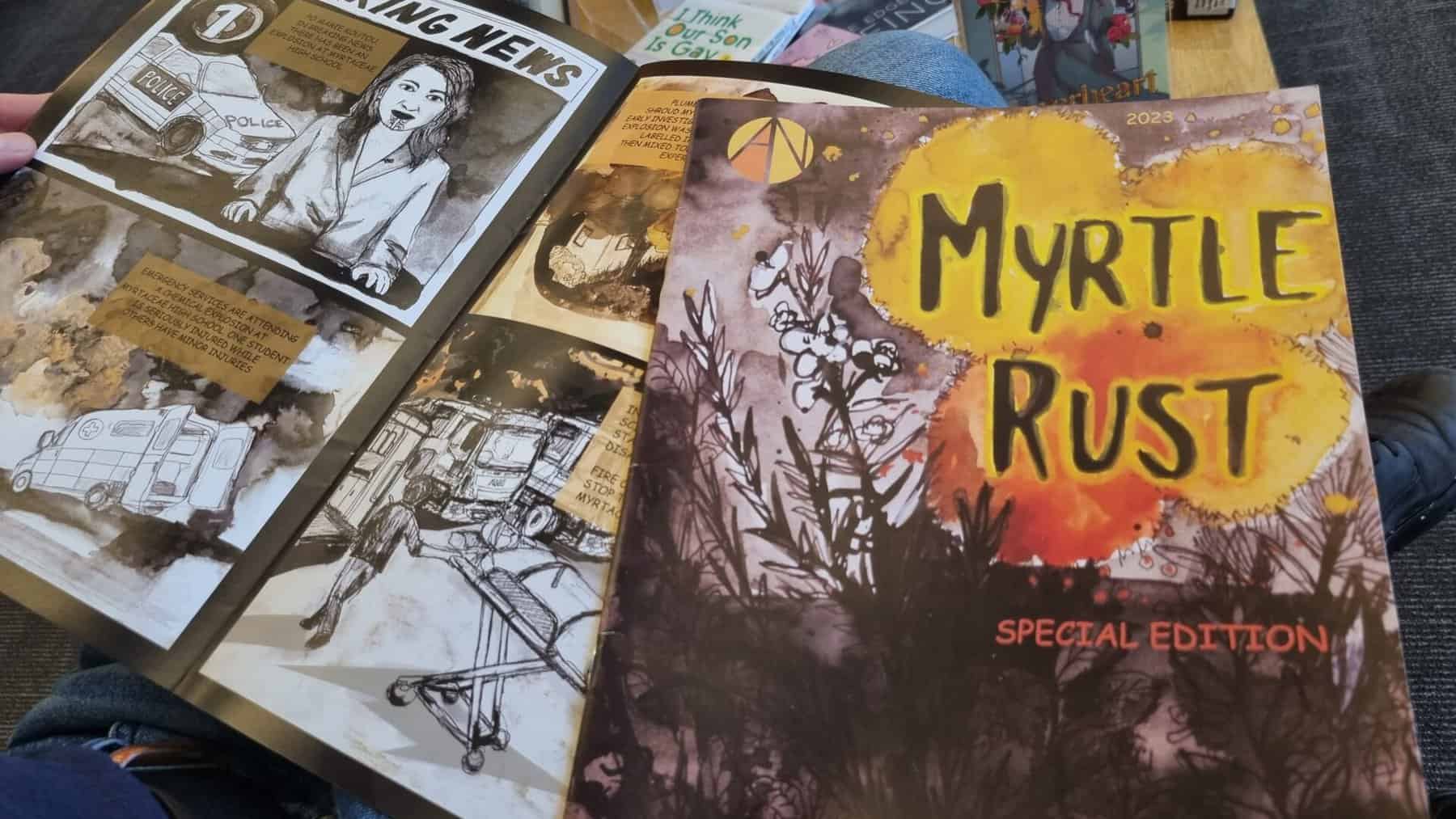Leafing through Aroha’s graphic novel, which was commissioned by Toi Taiao Whakatairanga and is intended for a teenage readership, you may catch whiffs of classic Hollywood horror.
The reader is led through a locker-lined high school hallway, a clandestine laboratory, and witnesses flashy newsroom bulletins — all building towards a blockbuster-esque climax.
“My teenage daughter helped me to write the storyline,” says Aroha. “She is really into horror comics and manga so I had her as my personal expert.”

Yet, at every step, Aroha’s narrative is vividly located in Aotearoa and steeped in reo Māori. Beautifully observed drawings of endemic rākau feature throughout, and the news anchor wears moko kauae. Most notably, the central tension of the novel is resolved through the recital of karakia.
“The karakia was written by real life Nanny J,” says Aroha, referring to the story’s hero, mātauranga expert Nanny J.
“Artist Tanya Ruka’s mother – Jane Mihingarangi Ruka (Ngāti Pakau, Ngāpuhi) – created the karakia for Tanya’s art project for Toi Taiao Whakatairanga. [After seeing footage of a recital], I approached Tanya for permission to use their karakia within my project and they both agreed. I then entered Tanya’s mum into the comic as Nanny J.”
“The gift of this karakia enabled me to end the story in a positive way, but I also love the way it references Tanya’s project which was commissioned at the same time.”
Stylistically, Aroha’s novel packs a punch. Her colour palette is restricted – the greyscale, sepias and bolts of flame-yellow are evocative of decay, darkness and death. For those who have insight into Austropuccinia psidii, the fungal pathogen that causes myrtle rust, the palette is reminiscent of the powdery eruptions and rust pustules that appear on the leaves of infected plants.
“I knew I wanted it to look and feel dark, with a limited palette, in the tradition of horror comic artists such as Junji Ito,” says Aroha. “I’m influenced by Te Ao Māori and have incorporated native plants into my art practice for a while now, embedding them as tohu (symbols) and signifiers for concepts such as the ongoing effects of colonisation.”
Aroha was able to gather inspiration from the botany department at the University of Otago, and Plant & Food Research in Tāmaki Makaurau Auckland, where she viewed examples of myrtle rust on host plants.
“The Toi Taiao Whakatairanga team were really encouraging and supportive [throughout the creative process],” says Aroha. “They organised various hui with other participating artists and scientists. Having those inputs really helped keep up the momentum, inspiration and execution!”
Toi Taiao Whakatairanga is a project within Mobilising for Action, a Ngā Rākau Taketake research theme.
– Kerry Donovan Brown
